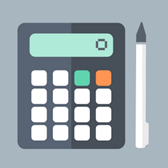
As the end of the year approaches, companies are once again scrambling to make sure their books are in order for FY 2016. For most people, this process is even more hectic than it was last year. This all lines up with a recent study which suggests that in the next five years, the productivity of Accounting and Finance departments is going to double – or even triple – in capacity. While this sounds like a positive development for companies, it also means that finance professionals (and management) will have to take on more work in the same time-span. So what is the real trouble, you ask? It’s something commonly referred to as “Record to Report” accounting.
Accounting isn’t broken. Accounting simply needs to modernize. “Record to Report” accounting was designed for the business world of decades past. Today, technology has dramatically increased the productivity of businesses with the application of devices such as automation technology. The increased productivity has met the demands of the consumer but has failed to change the accounting process to deal with these increased workloads. This means that accounting is still a “reactive operation,” or an operation performed in a shortened time span with unrealistic expectations that leaves employees scrambling to complete their work by the deadline for the prior fiscal year.
This is where Continuous Accounting can make a difference. This new evolution seeks to revolutionize the accounting world to make it easier for businesses to handle the mountain of tasks that must be completed to close their books. Continuous Accounting is a form of automation technology that embeds the tasks of closing the books within the daily activities of the employees. This means that instead of forcing people to rapidly close the books at the end of the year, this task is performed gradually on a day to day basis.
That asll being said, Continuous Accounting has numerous benefits — such as balancing the workload for the company, freeing up more time for people to spend on business analytics, ensuring that the data is current because it is being updated in real time, and aligning the financial data with the business operations due to the recency of the results. These features and benefits are the driving force behind the industry shift in accounting practices. Every business should consider investing in continuous accounting for the fiscal year.
